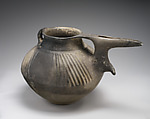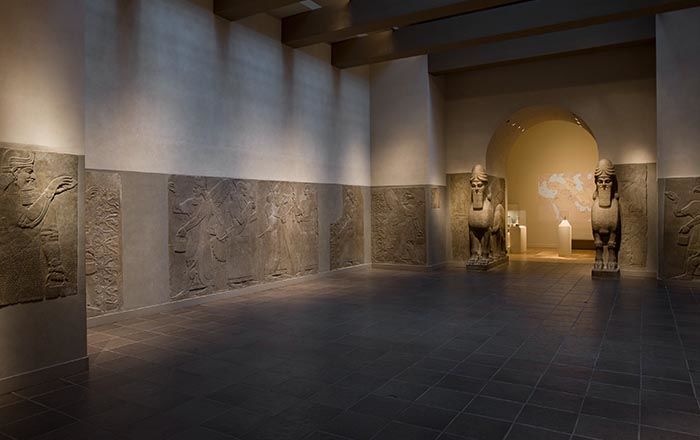Spouted pitcher
Not on view
This pitcher has a squat, globular body, a flat base, a wide neck and a flaring rim. A small handle connects the rim and neck on one side; on the other a spout rises vertically from the body of the pitcher before extending outward horizontally. The spout is attached to the rim by a small bridge. A drooping point protrudes from the spout where it emerges from the body. The pitcher is made of burnished grey clay and decorated with oblique fluting. It was made on a potter’s wheel, perhaps in two halves, with the spout and handle added later.
This pitcher was excavated at Hasanlu, a large settlement site in northwestern Iran. During the Iron Age Hasanlu was one of the largest and most powerful towns in Iran, and probably controlled much of the Ushnu-Solduz valley until its destruction ca. 800 B.C. by the Urartians. Like many in western Iran in this period, the people of Hasanlu made ceramic pitchers like this one with globular bodies and long spouts.
It is not clear what this pitcher was used for. Presumably it was used to pour a liquid containing dregs, such as wine, since the round body and spout would prevent the dregs from ending up in the cup. Some of the earliest evidence for winemaking in Iran, dating back to the sixth millennium B.C., comes from the nearby site of Hajji Firuz Tepe. Also, similar pitchers of contemporary date have been found in graves at Dinkha Tepe, some fifteen miles west of Hasanlu, along with cups, further suggesting that they parts of drinking sets.
This image cannot be enlarged, viewed at full screen, or downloaded.
This artwork is meant to be viewed from right to left. Scroll left to view more.



